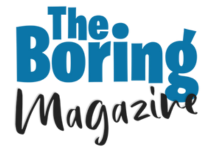Have you ever noticed how some offices run smoothly while others struggle to stay organized?
The difference often comes down to the tools they use to manage their work. In today’s fast-moving world, HR departments are finding that using modern tools helps them stay on top of tasks, improve communication, and boost productivity.
With the right digital support, HR teams can spend less time on routine work and more time focusing on people.
Let’s talk about five simple yet powerful ways modern HR tools can improve workflow in any organization.
Why Modern HR Tools Matter
HR work has changed a lot over the years. Earlier, most HR tasks were handled manually, tracking attendance, managing payroll, or updating employee records used to take hours.
Now, technology has made everything simpler. Modern tools not only save time but also reduce errors and help HR teams work more efficiently.
A well-chosen system gives clear data, makes communication faster, and helps create a better workplace experience for everyone.
1. Automate Daily HR Tasks
One of the easiest ways to improve workflow is by automating repetitive tasks. Things like attendance management, payroll calculation, and leave tracking can take a lot of time if done manually. With the help of hr software, these tasks can be done automatically with just a few clicks.
Automation ensures accuracy and consistency, which means HR teams can focus on more important things like employee engagement or planning training sessions.
For example, when attendance records and salary details are managed through automation, there is less chance of mistakes or confusion.
Employees can also access their records easily without having to ask HR every time. This saves everyone’s time and improves trust between teams.
2. Centralize Employee Data
Keeping all employee information in one place makes a big difference. With traditional methods, files are often spread across different folders or systems.
Modern HR tools bring everything together in one secure digital space. From joining documents to performance reports, everything can be accessed in seconds.
This not only saves time but also reduces the stress of managing multiple files. HR teams can pull out information quickly when needed, especially during appraisals, audits, or when preparing management reports.
It also helps keep sensitive data safe with controlled access. With all records properly managed, workflow becomes smooth and more organized.
3. Improve Communication and Collaboration
Good communication keeps everything moving efficiently. HR teams often need to share updates, send reminders, or coordinate with different departments.
Modern HR tools make this easy by offering built-in messaging systems, notification features, and collaboration options.
For instance, employees can receive instant updates about company policies, upcoming holidays, or training programs directly through the HR portal.
This kind of communication helps avoid delays and confusion. Managers can also use these tools to share goals and monitor progress in real time. It builds a better connection between teams, leading to more productive workdays.
Clear communication keeps employees informed, comfortable, and aligned with the company’s goals.

4. Streamline Performance Management
Performance reviews used to be one of the most time-consuming HR activities. Gathering feedback, tracking goals, and managing reports manually could take weeks. Now, modern HR tools have made this process much easier.
With canadian hr software, performance tracking becomes faster and more transparent. These systems allow managers to set targets, review progress, and give feedback regularly instead of waiting for annual reviews.
When employees can see their performance reports in real time, they know exactly where they stand and what areas they can improve. Regular feedback also keeps motivation high.
Companies using digital tools for performance management often find that employees stay more focused and achieve better results. It’s a smooth, organized process that benefits both employees and management.
5. Enhance Employee Engagement
When employees feel connected and appreciated, productivity rises naturally. HR tools play an important role here by helping HR teams track engagement levels and organize activities easily.
Surveys, polls, and feedback forms can be managed digitally, allowing quick responses and better planning. For example, HR can instantly see how employees feel about recent changes or what kind of activities they’d like next.
Modern tools also support reward and recognition programs. Employees can be appreciated digitally for good performance, which creates a positive work atmosphere.
Regular communication through HR platforms also helps employees feel part of a larger team. When everyone feels valued and included, the overall workflow becomes smoother because people are genuinely motivated to do their best.
Benefits of Using HR Software
The advantages of using digital HR tools go beyond time-saving. They bring structure and reliability to the workplace.
Here are a few simple but strong benefits that come from adopting modern HR systems:
- Less manual work means fewer errors and faster completion of tasks.
- Easy data access allows better decision-making.
- Communication becomes quicker and more organized.
- Employees can manage their profiles, reducing HR’s workload.
- Company data stays safe and well-organized in one place.
How Canadian HR Software Supports Growth
For companies in Canada, using canadian hr software brings additional advantages. These tools are built according to local laws and business standards, which makes compliance much easier.
Payroll, tax deductions, and employee benefits can all be handled correctly without confusion. They also come with features that match the specific needs of Canadian organizations, such as bilingual options and regional reporting formats.
Having a system that understands local work culture and regulations helps HR departments manage employees more effectively. This not only saves time but also builds confidence among employees that their information is managed properly and their rights are respected.
The Role of Data Analytics in HR
Modern HR tools also include powerful analytics that help HR professionals make smarter decisions. By studying attendance records, performance trends, and employee feedback, HR can identify patterns and plan better strategies.
For example, if data shows that employees are more active during flexible work hours, HR can adjust schedules to improve overall efficiency. Analytics turn simple data into meaningful insights that help companies grow stronger.
Building a Future-Ready Workplace
As workplaces keep changing, having efficient systems is becoming more important than ever. Modern HR tools are not just for managing data; they are also for building better relationships between employees and management.
They allow HR teams to work proactively instead of reactively. The use of digital systems gives everyone a clear understanding of goals and performance, reducing confusion and saving time.
When employees see that their workplace is organized and responsive, it improves confidence and satisfaction. This results in better teamwork and long-term loyalty to the company.
Final Thoughts
Improving workflow doesn’t have to be complicated. By using smart tools like hr software, health and safety software and locally adapted systems such as canadian hr software, companies can make HR management faster, simpler, and more transparent. These tools bring balance, structure, and ease to everyday work. When everything flows smoothly, HR teams can focus on what truly matters to people. And when people feel supported and valued, productivity naturally follows.

